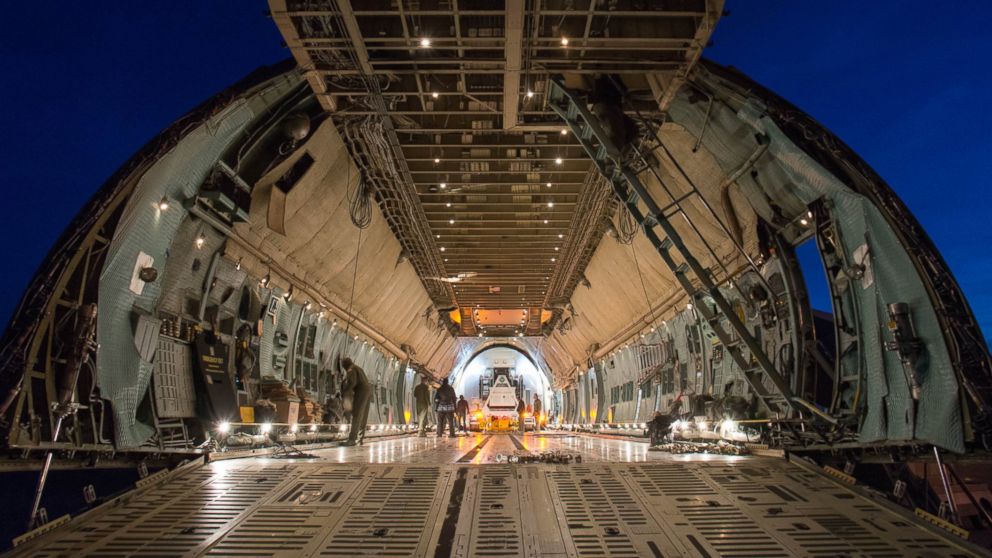How NASA Is Readying the Successor to the Hubble Space Telescope
Biggest space telescope ever built will one day take over for Hubble.

— -- NASA is getting ready to put part of the James Webb Space Telescope through a litany of cryogenic challenges that will simulate space.
The goal is to make sure the space telescope, which is set to launch in 2018 and be the eventual successor to the immensely successful Hubble Space Telescope, will be fully operational when it reaches its freezing destination 1 million miles from Earth.
NASA researchers will be watching especially close to see how the telescope performs in the newly renovated space simulating Chamber A at the Johnson Space Center in Houston, Texas. The vacuum chamber is the same place where the Apollo spacecraft were tested.
Moving even a test part of what NASA said is the largest and most powerful space telescope ever built is no small feat. With the 3,000-pound Pathfinder Backplane in a clean room at the Goddard Space Flight Center in Maryland, the team glided in a shipping container on air pads, a move NASA likened to a puck on an air hockey table.
Using a crane, engineers were then able to lift the part and safely lower it into the Space Telescope Transporter for Air Road and Sea (STTARS), which was then hooked up to a semi truck that plodded along at a gentle 5 mph to the nearby Joint Base Andrews.
The largest cargo plane in the United States fleet, a C-5 military plane, then had the honor of flying to the engineers in Texas what will surely be a vital piece of space history.
“We've got to test the test,” Andrew Booth, a NASA engineer, said in a statement. "That's why this Pathfinder is so valuable because it will ensure the testing on the actual telescope is accurate."
The telescope is named for James Webb, a former NASA administrator, and is a collaboration with the European Space Agency and the Canadian Space Agency.




